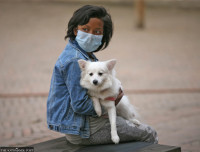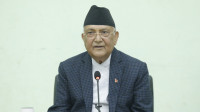National
With hotter days and approaching monsoon, snakebite incidents on rise
A study shows close to 3,000 people die of snakebites every year in the Tarai alone, many even before reaching the hospital.
Arjun Poudel
Last Monday, two siblings— Greece Pahadi, 13 and his younger brother Grishma, 3— were bitten by a venomous snake while sleeping. The incident took place at their home in Dudhauli Municipality-1 of Sindhuli district.
When the boys’ mother noticed her younger son was in throbbing pain at 3 am and found that both boys had been bitten by a snake, they were rushed to a nearby primary healthcare centre. The centre referred the boys to a hospital in Janakpur. Doctors at the hospital pronounced both boys dead at 8 am.
As the temperatures have started rising, and the monsoon is around the corner, cases of snakebite are set to increase. What concerns experts as well as health workers is the critical time being lost in taking victims to the hospitals.
“Rush the victims to hospitals immediately after a snakebite,” Dr Sanjib Kumar Sharma, rector at the BP Koirala Institute of Health Sciences who is also a snakebite expert at the World Health Organisation, says. “Don’t wait for an ambulance. Rush the victim to hospitals with whatever transport is available. Motorbike is an ideal means of transportation, which is widely available and can easily be used.”
The Ministry of Health and Population said that most snakebite deaths (40 percent) occur in rural areas, while 40 percent of the fatalities take place while transporting the victims to the treatment centres. The remaining 20 percent deaths occur at hospitals. Most deaths occur mainly due to the delay in taking the victims to hospital.
Snakebite incidents and resulting deaths are common in Nepal, but the issue still remains grossly neglected and experts call it “a lurking invisible crisis”.
Each year, around 2,700 people, mostly women and children from Nepal’s Tarai region, die of snakebite every year, according to a report titled: “Snakebite epidemiology in humans and domestic animals across the Tarai region in Nepal: A multi-cluster random survey.”
The study was jointly carried out by experts at the BP Koirala Institute of Health Sciences; Division of Tropical and Humanitarian Medicine, Geneva University Hospital; Institute of Global Health, Department of Community Health and Medicine, Faculty of Medicine, University of Geneva; Institute of Environment Science under Geneva University; and the Department of Control of Neglected Tropical Disease, World Health Organisation Geneva; in 2018 and 2019, which was also published in The Lancet, a leading international medical journal.
Data from the Ministry of Health and Population, however, shows only 1,500 yearly hospital admissions. Of them, around 1,000 get bitten by venomous snakes and up to 130 die.
Officials at the Health Ministry admit that those who die before reaching health facilities are not included in the government records.
“Those who die in communities do not come in the government records,” said Dr Hemanta Ojha, chief of the Zoonotic Section at the Epidemiology and Disease Control Division.
The World Health Organisation has added snakebite envenoming to the list of neglected tropical diseases, highlighting the need for stronger epidemiological evidence in endemic countries such as Nepal.
Neglected tropical diseases are often linked with land mines, as both—the land mines and tropical diseases—disproportionately affect the children, women and poor people.
Experts say that people who go to the fields to collect fodder for cattle or farmers who do plantation or harvesting and children who play in open areas are the ones more vulnerable to snakebites. In the past, in Nepal, there have also been incidents of deaths from snake bites among women and children while residing in the menstrual huts.
Poor people living in thatched-roof houses are also highly vulnerable to snakebite, as snakes visit such homes in search of rats.
Ill-equipped health facilities, shortage of anti-snake venom, and a lack of awareness among many people in rural areas, who often visit quacks instead of a physician for seeking treatment for snakebite, are among the reasons for the deaths of victims, according to doctors.
Moreover, due to a lack of doctors and anti-snake venoms, no ventilators, and kidney dialysis equipment, hundreds of people are dying of snake bites every year.
Experts say strong healthcare systems, massive awareness campaigns and the availability of anti-venom at healthcare centres, besides trained human resources are some of the preconditions for saving lives from snakebites.
Reducing snakebite cases and deaths by 50 percent by 2030 is one of the Sustainable Development Goals and Nepal is also a signatory country to meeting that target.
Health Ministry officials said they have supplied anti-venom serums to around 90 Tarai-based healthcare facilities, which provide snakebite treatment, prepared 20 master trainers, who will impart training to doctors and health workers about snakebite case management and have prepared materials in five different languages, for spreading awareness.
The recent case in Sindhuli showed that it took around five hours to take the victims to hospitals.
“In snakebite cases, the first one hour after the bite is taken as the golden hour,” said Sharma. “The more the time taken to reach the hospital, the more the risk of dying. A lot of people bitten by venomous snakes die before reaching the hospital.”




 7.15°C Kathmandu
7.15°C Kathmandu










%20(1).jpg&w=300&height=200)



